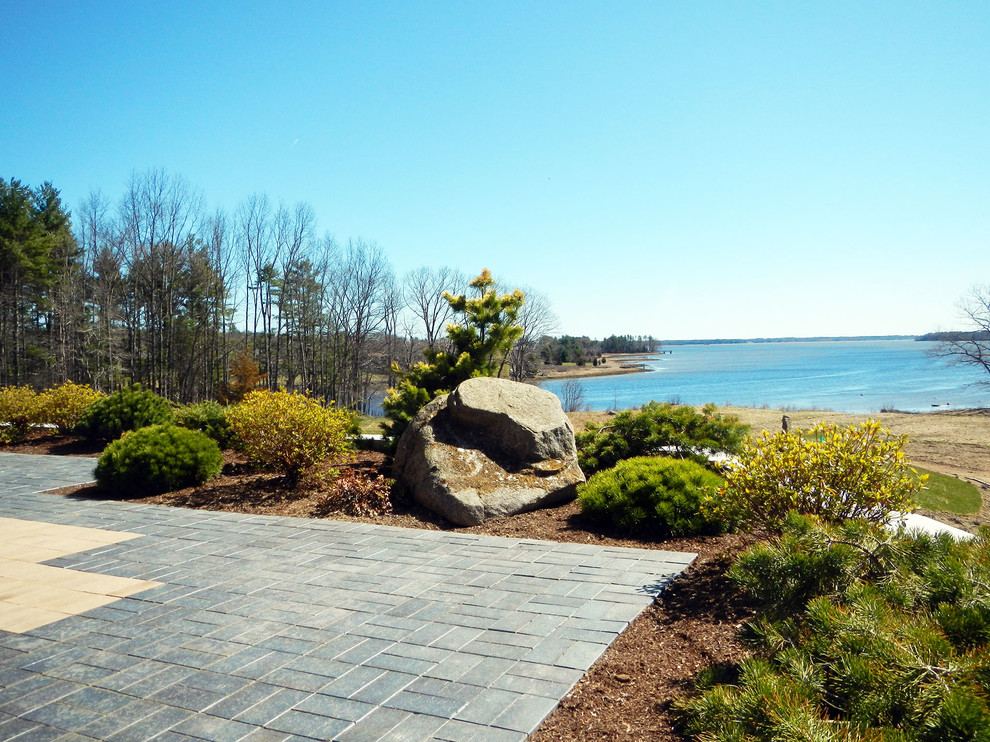
Will you have an irrigation system? That can make a big difference in your plant selections. Incorporate it into your existing soil adding some compost as well will make your new plants very happy. Then the hard/fun part- remove all that does not work and bring in yards and yards of good topsoil. They can be a great source of information. Utilize the help of your local nurseries on plant selections for your zone. It will save you money by not planting what won't work. You must identify which areas of your yard are which exposure. Is there an area that is shady or too wet? Fix it (french drain? sand added to soil) or work with it by planting plants that like that. Do you have room for an outdoor "seating area"? Do you want an area for cutting flowers or growing herbs, etc? Find the an area with at least 4-6 hours of sunlight a day for most to thrive. Identify any areas that need privacy from neighbors or a road and any areas that would make a great focal point. In addition to these in the nearby mountain parklands here we also see dwarf spireas, huckleberries and rhododendrons.Ī landscape industry friend liked to combine mountain hemlocks with 'Ramapo' rhododendrons, suggesting what might be seen in high Asian mountains.Draw out your lot and house to scale on graph paper. Heaths and heathers are traditional with conifers in suitable climates (such as ours) because these provide attributes the conifers lack, yet look naturalistic with them. Speaking of Nandina, it and numerous other broad-leaved evergreens provide year-round structure.Īs do various evergreen herbaceous perennials. Even something that makes shoots only 1" long will be 6" bigger (in one direction) after six flushes.

Otherwise you will have to start root-pruning or shearing tops to control size.

The Nandina in the one shot is already overlapping the fastigiate golden yew. You must be planning to dig a bunch of it up and re-space in a few years. Like a flower show garden that conifer display is not going to be good for very long. When everything else is sleeping, conifers keep on chugging and provide excellent shape, color, structure and life to the landscape.Ī few more pictures to illustrate what can be done with conifers in a small amount of time. Often they are drought tolerant as well and can go weeks without water once established.Īnother desirable trait is that they don't need much clean-up - they usually keep to a nice shape without pruning and they self-mulch(no leaves to rake - at least with smaller ones).įinally, to me, the most important trait is that they provide year-round color and interest. My gardens are very young(I've been gardening for about two and a half years), but most of the plants in my gardens are dwarves or miniatures, capable of staying in their current spot for 10+ years.Ĭonifer gardens don't appeal to everyone - there's a real lack of 'flowers' usually but they offer many advantages over a perennial or mixed garden.įirst most conifers are very tough, bug-resistant, weather-hardy plants. I'm sure if you head on over to the conifer forum there are many members who would be glad to offer tips on starting and taking care of a conifer garden. Tophers, yes, the plant in the final picture on the right is Picea pungens(Colorado Spruce), named 'The Blues'.

An Eastern white pine, it's about 12 years old in this photo. To answer a couple questions, the pine in the first photo is


 0 kommentar(er)
0 kommentar(er)
